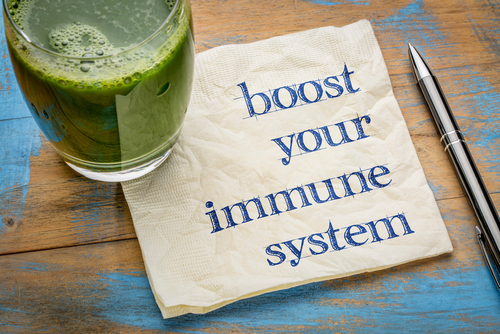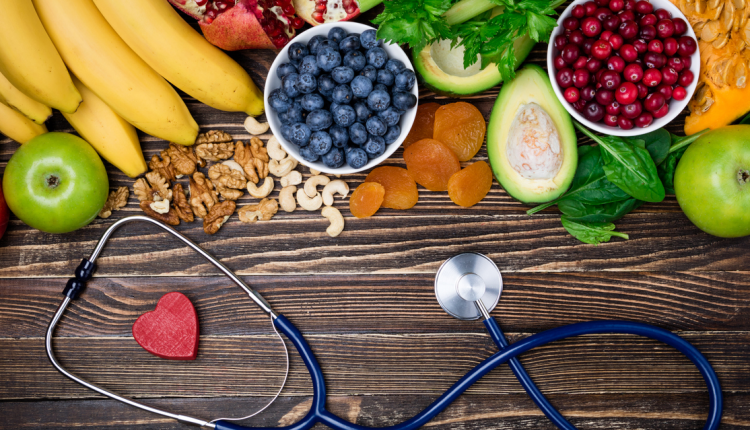Simple strategies that will improve your immunity (II)
“The Immunity Fix: Strengthen Your Immune System, Fight Off Infections, Reverse Chronic Disease and Live a Healthier Life”, a new book written by James DiNicolantonio, Pharm.D., review how to improve and regulate immunity – a topic that should be high on anybody’s list these times.
Read the first part of the article
 Below continues the list of the methods people can use for improving their immunity, reviewed by DiNicolantonio in his book.
Below continues the list of the methods people can use for improving their immunity, reviewed by DiNicolantonio in his book.
Address your metabolic health
In addition to addressing nutrient deficiencies, in particular vitamin D, magnesium, zinc and selenium, Land stresses the importance of optimizing your metabolic health. “Research [has found] that metabolic syndrome, obesity and diabetes, all those conditions, worsen the outcomes of COVID-19 as well as other infections like influenza. Obesity also increases the duration that you can carry the virus and share it for longer. So, it’s especially negative in a society that tends to be in poor metabolic health.
One interesting aspect that we discovered during the writing of the book is that one of the molecules that gets activated during an infection is called HMGB1, which stands for High Mobility Box-1. That gets activated during an infection, and it’s one of the key molecules that kind of offsets the cytokine storm by activating NFKB and NLRP3 inflammasome and eventually causes this massive pro-inflammatory cytokine response…
What we theorized based on this research, is that hyperglycemia, insulin resistance, elevated blood sugar will make it more likely that HMGB1 is going to get into the cell and turn on NFKB and these other pro-inflammatory cytokines that will eventually lead to the cytokine storm.”
The case for a low linoleic acid diet
DiNicolantonio and other authors discussed the importance of avoiding seed oils in their book, “Superfuel.” In it, they dove deep into the importance of healthy fats for metabolic health, and the destructive nature of linoleic acid-rich vegetable oils.
Linoleic acid (LA) is one of the most perishable molecules in food, meaning it’s highly susceptible to damage. When it oxidizes, it turns into oxidative metabolites called oxidative linoleic acid metabolites or oxylipids or OXLAMs that damage proteins, DNA and cell membranes and are likely the primary culprit of chronic disease.
OXLAMs also activate pathways that destroy your immune response. What authors didn’t fully appreciate at the time was that even healthy oils, such as olive oil, can have a negative impact, thanks to their LA content. LA is also high in conventionally raised chicken, as these animals are typically fed LA-rich grains.
If you exceed 10 grams of LA per day, and perhaps as little as 5 grams – regardless of their source – you may radically worsen your metabolic health. From a historical perspective, 150 years ago, the average consumption of LA was 2 to 3 grams. Today, many get more than 30 grams a day from their diet. In authors’ view, an LA-restricted diet may be the single most important dietary intervention available. DiNicolantonio adds: “That’s a great point, and I think from a COVID-19 perspective, the biggest improvement you want to do is increase the resilience of your cells to oxidative stress. Unfortunately, if you’re consuming a diet high in LA, and if it doesn’t get burned for fuel and it gets stored in tissues, the half-life of LA is 680 days, and it can start oxidizing the cellular membranes, including on your immune cells as well.
If you increase your omega-6 intake, that affects the levels in your immune cells. And if you saturate your immune cells with this oxidized LA, you’re probably at a much higher risk of secreting more proinflammatory cytokines in your own cells, and your lungs and your arteries are probably much more susceptible to the damage that occurs when our body aims to kill off viruses.
I’m sure if we were to actually look at the blood levels of oxidized LA in severe COVID-19 patients, they would be sky high… So yeah, it’s likely a huge driver of overall inflammation.”
Simple strategies to improve your NAD+ level
Another important molecule is nicotinamide adenine dinucleotide (NAD+), which can be increased using precursors such as nicotinamide mononucleotide (NMN) and/or nicotinamide riboside (NR).
Any type of oxidative stress is going to deplete NAD. So, fix your metabolic dysfunction and improve your nutrient deficiencies first. NMN appears to be the superior of the two, as it activates a salvage pathway. However, you don’t need to take an expensive supplement to improve your NAD+ level. Strategies such as exercise, hot or cold exposure and time-restricted eating – which costs you nothing – can get the job done.
Land explains: “A lot of the NAD that your body produces is recycled through the salvage pathway. Very little (less than 1%) of it is going to come from food, especially tryptophan or niacin.
The easiest way to prevent losing your NAD as you get older or as you get immunocompromised is to promote the salvage pathway, and one of the activators of the NAMPT enzyme that governs the salvage pathway is AMP protein kinase (AMPK), and AMPK gets primarily turned on by catabolic stressors in the body, such as exercise, sauna, cold, as well as fasting.
What I’ve concluded is that doing this regular intermittent fasting or timed eating is a very efficient way of keeping our energy levels high and preventing the lowering of the other ways that lower NAD, like inflammation and oxidative stress.
The problem is that NAMPT is controlled by sirtuins and sirt1 especially. Sirtuins are longevity genes. Sirtuins also control your circadian rhythms. So, what I think is that if your circadian rhythms are misaligned, if you’re doing shift work or you’re jet lagged or something, then sirtuins are not going to be expressed, and you will also then inhibit NAMPT, which will then shut down the NAD salvage pathway.”

In other words, when sirtuins are suppressed from mismatched circadian rhythms, you also suppress NAMPT, as the NAMPT requires sirtuins to work. Sirtuins also consume NAD, so if your NAD level is low, you’re not going to get the benefits sirtuins provide.
“I think the supplemental NR and NMN are very useful if you’re in an NAD-deficient state because the problem is that if you’re already low in NAD, then it’s hard to raise that bar because you’re already so low and depleted,” Land says.
“If your NAD is high, then you experience the less negative side effects from inflammation oxidative stress because your body can repair and deal with it, whereas if you’re immunocompromised, you’re very old or you are just nutrient deficient and have low NAD, then it’s a vicious feedback loop. So, using something like a NAD precursor or a booster can be a quick fix to get yourself back on the right track.”
If you use an NAD or NMN supplement, consider getting it in suppository form. Other alternatives include subcutaneous or intranasal administration, all of which are more effective than oral supplements. That said, as noted by DiNicolantonio, if your NAD is low, your best bet is to address the underlying cause rather than simply adding supplements.
“Ultimately, any type of oxidative stress is going to deplete NAD. So, fix your metabolic dysfunction and improve your nutrient deficiencies first, and ultimately your NAD need is going to go down. Fix the aspects that are causing you to burn through your NAD.”
One of the most common sources of oxidative stress is electromagnetic field (EMF) exposure, which is the topic of the book “EMF*D.” Two primary enzymes consume NAD. One is poly ADP-ribose polymerases (PARP), which is also known as adenosine ribosyl transferase (ARTD). PARP is used to repair DNA damage, and every time PARP is activated, it uses up 150 molecules of NAD.
The good news is that strategies such as sauna, exercise and fasting not only will improve the production of NAD, but also will reduce the consumption of it. These strategies also lower inflammation, which in and of itself will lower your NAD consumption.
Other benefits of sauna bathing
In addition to preserving your NAD, sauna bathing also mimics a fever, which is your body’s first-line defense against infections. DiNicolantonio explains: “The reason why we induce a fever to fight an infection is because that allows our cells to secrete heat shock proteins. In order for a virus to replicate, it has to infect your cell, hijack your machinery, and it has to export its ribonucleoprotein complex out of the cell to replicate. In order for that complex to get exported, the M1 protein has to dock onto it.
Heat shock protein 70, which gets released during sauna sessions, can combine to the viral ribonucleoprotein complex preventing M1 protein from docking. [By] inhibiting the export of that viral ribonucleoprotein complex, [heat shock protein] essentially inhibits viral replication.”
According to Land, regular sauna bathing and exercise are among the best ways you can do to strengthen your immune system and increase your body’s resilience. The two are also complementary.
Exercise causes preconditioning hormesis, so if you exercise before your sauna, then you significantly bolster your body’s ability to handle infection and other stresses. The heat will also promote recovery from the exercise by boosting growth hormone, repairing damaged proteins and reducing inflammation.
In short:
There are all these factors which can help improve your immunity:
– vitamine D
– magnesium
– zinc
– selenium
– melatonin
– H2O2 (hydrogen peroxide)
– optimisation of metabolic health, including consumption of less linoleic acid
– improve NAD level, by using precursors as NMN (nicotinamide mononucleotide) and/or nicotinamide riboside (NR), if possible in suppository, subcutaneous or intranasal form (these are more efficient than oral supplements).
– exercise
– sauna
– fasting.
yogaesoteric
May 17, 2021
